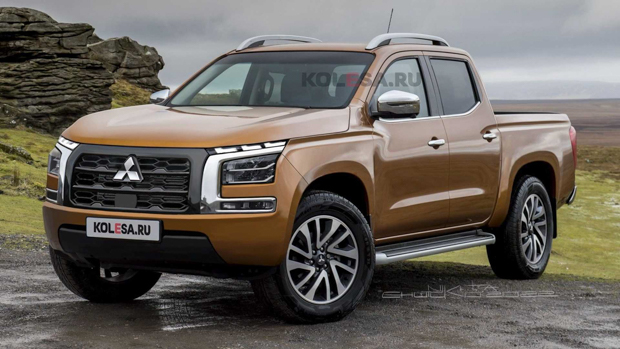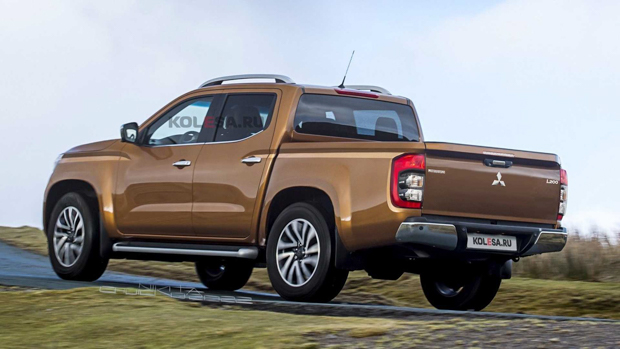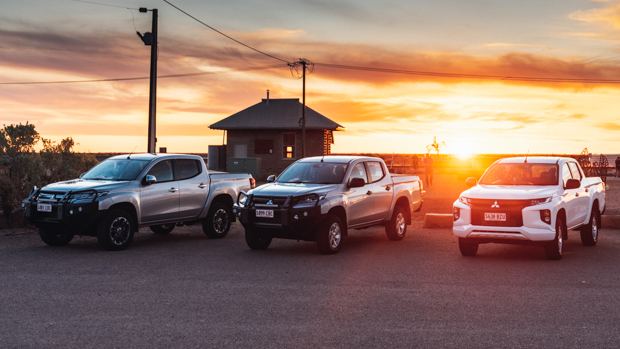-
Car Reviews
- Car News
-
Car Comparisons
Latest comparisons
- Chasing Deals
Mitsubishi’s new-generation Triton ute is yet to be revealed by these latest renders hint at what might lie beneath
New renders based on spy images of the sixth-generation Mitsubishi Triton have been released online showing off a larger and more capable dual-cab ute without the camouflage.
The new-generation Triton isn’t expected to make its debut until 2023 but the frequency of prototypes seen on the roads in recent months suggests that it will appear earlier in the year.
With the chassis underneath the Triton almost certain to underpin the Nissan Navara ute, along with the Pajero Sport and Terra SUV large SUVs the changes seen here could have a big impact on the future of all these models.
The sixth-generation Triton is expected to wear a less angular design on a significantly longer and wider body than its predecessor, likely in the purist of not just enhanced capabilities but also increased road presence.
In the series of images created by Kelsonik Renders, the imagined Triton feature a slimline LED daytime running light above a C-shaped chrome piece that houses LED headlights.
It’s a similar design to that of the Outlander midsize SUV, though with a gruffer appearance and a larger rectangular grille plus a sharper angle between the bonnet and the front end.
Lower-down, designers have chosen a shallow front bumper, likely to increase the approach angle, while the rear appears to be similar to the outgoing model
At 5305mm long, 1815mm wide and 1795mm tall in dual-cab guise, the Triton has always been slightly smaller in its segment which made it more agile than its competitors but being compact was not always to its advantage.
When the new Triton arrives, it will likely be similar in size to other new-generation utes like the T6.2 Ford Ranger (which measures 5305mm long, 1795mm wide and 1815mm high) a change which could lead to an increased payload, on-road stability and greater appeal among buyers.
If the production version of the Triton is as wide as the prototypes suggest, there could be space available between the shock towers for a larger engine than the current 2.4-litre diesel.
Mitsubishi could draw on its connection with Nissan to source the Pathfinders 3.5-litre petrol V6 (known as the VQ35DD) which produces up to 219kW of power and 366Nm of torque in the Rock Creek edition.
Far more likely however is an evolved version of the 133kW/430Nm 2.4-litre turbo-diesel four-cylinder engine found in the current Trition – potentially coupled with the assistance of one or more electric motors courtesy of a plug-in hybrid system.
Mitsubishi is well-versed when it comes to plug-in hybrids and the system could offer a good compromise to independent tradesmen and businesses by offering cheap electric driving for short commutes, as seen in the Outlander PHEV which boasts up to 87km of pure electric range according to WLTP.
But by retaining the diesel engine, the Triton would also maintain its ability to tow for long distances without frequent charging, as seen with some battery electric utes like the Ford F-150 Lightning and Rivian R1T.
Latest news
About Chasing cars
Chasing Cars reviews are 100% independent.
Because we are powered by Budget Direct Insurance, we don’t receive advertising or sales revenue from car manufacturers.
We’re truly independent – giving you Australia’s best car reviews.


